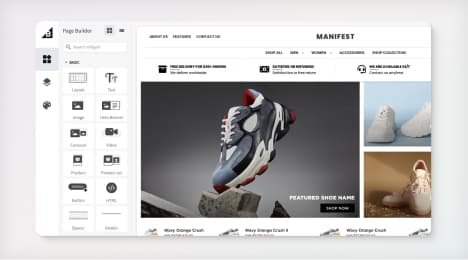
Watch Our Product Tour
See how BigCommerce helps you build and manage your online store with ease.
- Ecommerce Insights

6 Key Steps to Launch Your Online Store
Explore our Launch Foundations series to get your BigCommerce store up and running quickly.
BigCommerce helps growing businesses, enterprise brands, and everything in-between sell more online.
What is O2O (Online-to-Offline) Commerce
It was forecast that ecommerce would account for 14.5% of total US retail spending in 2020, representing an all-time high. But that still leaves 85.5% of sales happening in bricks and mortar stores.
Historically, there was no overlap between buying a product online and taking a trip to a mall to shop in-person (offline). These two activities involved separate customer experiences and interactions.
But, advances in technology have led to many retailers offering both types of shopping experience to customers.
Referred to as online-to-offline (O2O) commerce, continue reading for the lowdown on the term and how to implement it.
Online-to-Offline (O2O) Commerce Defined
O2O is a business strategy that’s designed to draw potential online customers to physical stores. The approach also aims to create a seamless digital experience at all stages: before, during, and after the purchase.
Consumers are identified online through email campaigns and advertising. These potential customers are then enticed to bricks and mortar stores to make a purchase. The physical store may have its own promotions, too, to further encourage sales.
Retail-specific in nature, online-to-offline commerce applies both omnichannel commerce and multi-channel marketing.
The Workings of O2O Commerce
In the past, ecommerce businesses have been viewed as stiff competition by retailers selling products from a store. Why? Because of factors such as price and selection.
Physical buildings incur high fixed costs, such as rent and employee salaries. They’re also limited by space. Whereas ecommerce retailers can provide an extensive selection without hiring as many staff.
For example, if you’re a business owner looking for Twist competitors, you can find out all you need to know online. Then, you can go ahead and buy your preferred software at the touch of a button.
Similarly, if you’re seeking alternatives to Chatwork, look no further than your laptop. There, you can research and follow up with an online purchase.
But when a company has both an online and an offline presence, online-to-offline commerce can be implemented. How? By treating both channels as complementary – they don’t have to compete against one another.
Reports show that 63% of shoppers start their journey online. To capitalize on that, O2O businesses should make that online experience as first-rate and convenient as possible.
Raise awareness online, where customers do their research electronically. Then, they can be encouraged to head to a physical store to buy the product or service in question.
Other methods an online-to-offline commerce company has at its disposal include:
In-store pick up of products bought online or on a mobile app.
Allowing customers to place an order online from a bricks and mortar store.
Permitting goods that have been purchased online to be returned to a physical store.
Installing a mobile retail kiosk, such as an in-store information booth.
The aspect these strategies all have in common is they allow consumers to move between online and offline with ease. The goal is to build as many of these processes and customer experiences into your business.
Only then can you think of your operation as truly online-to-offline.
O2O Commerce Exceptions
The rise of online-to-offline commerce doesn’t mean that purchases won’t be made online anymore.
There will be cases where customers research online and visit a store to see the product in real life – they may want to try it on or compare pricing. Once they’ve done that, the consumer may still buy the item online.
Ecommerce businesses and the web application structures of which they’re comprised are still going strong. They haven’t been eradicated by online-to-offline commerce.
O2O Commerce Examples
There are a number of useful O2O commerce examples, including:
Amazon’s purchase of Whole Foods.
Traditional retailer Walmart’s acquisition of Jet.com for around $3 billion in 2016.
Starbucks’ Mobile Order and Pay lets customers order and pay from their mobile.
Glossier harnesses Instagram to steer clientele to its physical stores.
The launch of the Guide Shop by ecommerce retailer Bonobos.
Let’s look at Amazon’s acquisition of Whole Foods in a bit more detail. That acquisition is a prime example of an ecommerce giant venturing into the physical space arena.
The purchase added 464 physical stores to the company. What did that mean? The online retailer could integrate those stores with its ecommerce presence. The world of click-and-collect opened up.
What’s more, Amazon Prime members were able to make the most of two-hour delivery services from Whole Foods stores on orders greater than $35.
And once a customer is physically in a store, there’s the opportunity to encourage them to buy additional products or use in-store services.
O2O Commerce Key Takeaways
Online-to-offline (O2O) commerce is a model that entices customers from the online space to physical stores. How? By employing marketing and advertising techniques. And by rolling out technology such as mobile apps and in-store retail kiosks.
By building as many of these techniques and technologies into your business and merging both online and offline strategies, you can create an O2O enterprise.
BigCommerce helps growing businesses, enterprise brands, and everything in-between sell more online.
Start growing your ecommerce business even faster.
High-volume or established business? Request a demo